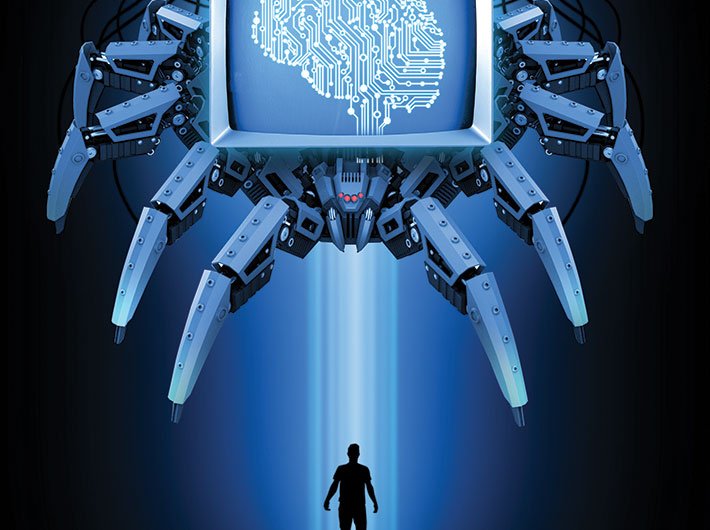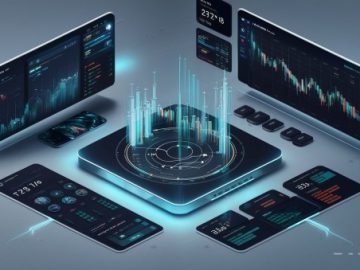An excerpt from “Inevitable AI” by Aswin Chandarr that helps make sense of the future that is already here
Inevitable AI: Art of Growth with Generative Intelligence
By Aswin Chandarr
Stardom Books, 342 pages, Rs 699
While there is an overwhelming amount of conversations about artificial intelligence (AI) globally only a select few know what it actually is, what it can or cannot do and why. Here is a book that captures this knowledge for a general reader: ‘Inevitable AI: Art of Growth with Generative Intelligence’ by Aswin Chandarr. The book offers a comprehensive exploration of the transformative potential of AI in the realm of growth and innovation.
Starting from knowing what AI is, to understanding its working model by using cartoons, illustrations, stories and captivating dialogues. From getting the idea of how it can change your ideas into vision to understanding how Artificial Intelligence makes your life easier, can help you make your daily work easy. The book also talks about complex topics such as machine learning, creativity over AI, and the ethical implications of AI, all while maintaining a clear and engaging narrative style. The author excels in breaking down intricate concepts into digestible explanations, making the book suitable for both novices and those with a technical background.
Chandarr, who has been at the forefront of AI and robotics, embodying the roles of an entrepreneur, author, and educator, gives a perfect recipe for working professionals on transforming themselves to be relevant in the age of AI. It gives Investors a sound framework for placing their bets and funding new ventures. It gives Entrepreneurs and Enterprises a structured way to create and use new AI products.
Demystifying AI through engaging storytelling and vivid analogies, this book presents a clear, accessible exploration of its foundational principles, while grounded in technical reality. It introduces tactical frameworks to comprehend and harness the true potential.
Focusing on practical strategies, the book offers insights for decisive enterprise transformation, innovative product ideas, investment opportunities, and navigating the impending job displacement. This is a critical resource for professionals, leaders, investors, and policymakers, urging them to shape a future where AI actively enhances our reality.
Offering a critical examination of our digital ecosystem’s growing imbalance and foresight into raising children in an age of AI, this book is a compelling call to action for all who bear the weight of humanity’s tomorrow.
Here is an excerpt from the book:
AI Embedded Governance
Let’s now turn our attention to the internal workings of government institutions. The application of AI isn’t merely an external pursuit aimed at public services and protections. It holds substantial potential to enhance the effectiveness of operations and inter-departmental communications within the government machinery.
Consider the vast amount of data that government agencies generate and handle daily. This includes bureaucratic documentation, citizen service requests, regulatory filings, and countless other forms of information. Traditional manual processing of this data can be time-consuming and fraught with inefficiencies.
AI can revolutionize government operations by automating mundane tasks and streamlining processes, thus freeing up human resources for more strategic roles.
AI-based systems can help sort, categorize, and prioritize incoming requests and workloads, enabling government staff to manage tasks more effectively. Natural Language Processing (NLP) tools can parse and interpret written communication and automate tasks like summarizing reports, preparing meeting minutes, or tracking action items. Another critical application lies in enhancing cross-departmental communication. Traditionally, silos within government bodies can impede information flow, leading to duplicated efforts and missed opportunities for collaboration.
By applying AI to internal communication and data-sharing, we can break down these silos. Machine learning models could predict which departments need to collaborate based on the nature of their work or flag overlapping initiatives that could be merged for greater efficiency.
Imagine a scenario where a country has developed robust internal AI capacity. This isn’t merely a repository of AI tools but a deep, institutional understanding of AI’s potential and limitations. From the highest echelons of decision-making to the frontline workers, this AI literacy could enable a more effective, proactive, and resilient government body.
This internal AI capacity would serve as a foundation that can be leveraged across various arms of the government, military, and police. With a central AI competence center, knowledge transfer, best practices, and successful AI implementations could occur smoothly, ensuring all departments can access the best available AI resources. This could lead to more cohesive strategies, informed decision-making, and efficient resource utilization.
AI has immense potential to transform how governments operate, internally and externally. By enhancing internal efficiencies, breaking down silos, and building robust AI capacity, governments can position themselves to navigate the challenges of the 21st century more effectively.
Let’s consider some practical examples.
Streamlining Operations
Imagine a government department that handles infrastructure projects. It receives thousands of documents daily, including proposals, bids, contracts, reports, compliance certifications, etc.
Processing all these manually is time-consuming and prone to human error. Here’s where AI comes in.
An AI-powered document management system could streamline this process. As soon as a document arrives, the system classifies it (is it a bid, a contract, or a report) and routes it to the appropriate official or team. The system could also extract key information from the document — for example, the project’s budget from a proposal or the completion date from a report. This extracted information could be automatically summarized and presented to decision-makers, helping them quickly grasp the document’s essence without reading it.
Moreover, if the document needs certain action – say, it’s a proposal that needs approval or a compliance certification that requires a review – the AI system could automatically schedule this action, ensuring nothing falls through the cracks.
Or consider the case where a national environmental agency is tasked with reviewing and responding to thousands of public submissions about local environmental concerns each year. Traditionally, this involved a team of employees manually reading and categorizing each submission, which could take weeks.
However, an AI system automatically categorizes these submissions based on their content upon receipt. The AI system flags urgent matters, assigns them to the relevant personnel, and sends notifications for immediate action. The system can also generate a summary of the issue for the personnel to review, significantly reducing the processing time and allowing the agency to respond to public concerns swiftly and efficiently.
Enhancing Cross-Departmental Communication
Let’s think about a complex national problem, like combating climate change. This task involves multiple departments — Environment, Energy, Transportation, Agriculture, and others. Traditionally, these departments might work in silos, leading to fragmented efforts.
Here’s where AI could enhance cross-departmental communication. An AI tool could detect overlaps or complementary efforts by analyzing each department’s various projects, initiatives, and communications. For instance, if the Environment Department is working on a reforestation initiative, and the Agriculture Department is planning a program that would involve cutting down trees in the same area, the AI tool could flag this conflict and suggest collaboration.
The AI could also identify gaps where collaboration is needed but not happening. For example, it could recognize that the Energy Department’s new renewable energy policy might impact transportation trends and suggest that the Energy and Transportation Departments coordinate.
Let’s consider a situation where a health department is running a campaign to promote healthy eating habits while the education department is developing a new curriculum that includes nutrition education. Traditionally, these two departments might work in isolation, duplicating efforts. However, an AI system could identify the overlapping objectives and suggest a collaborative approach, potentially creating a more comprehensive and impactful program.
These are just a couple of examples that illustrate how AI could streamline operations and enhance communication within governments. By automating routine tasks and promoting collaboration, AI has the potential to make governments more efficient, effective, and responsive. It’s an exciting prospect, one that could shape the governments of the future.
[The excerpt reproduced with the permission of the publishers.]




